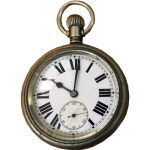A fraction of a second. 
That’s the time it takes to cause damage to our bodies. Whether a car accident, a cat scratch, or a surgeon’s incision, it takes less than one second to cause bodily damage.
Weeks to months.
That’s the time it takes to heal the damage. Whether a car accident, a cat scratch, or a surgeon’s incision, it takes weeks to months to heal the bodily damage.
Why?
Why the difference in time?
What if a bone took just as long to heal as it does to break? What if the swelling and scarring from a surgeon’s incision healed by the time we woke up from the anesthesia?
I have always been interested in how damage is created so quickly, but the healing of that damage takes so long.
Why?
Why the difference in time?
There must be a reason, some evolutionary advantage to a slow heal. Is it to force us to slow ourselves down and give ourselves a rest? Does a forced rest somehow give us an evolutionary advantage?
If you read my blog or follow me on Facebook or Instagram, you know that I had hernia surgery three weeks ago. So this difference in time between damage and healing has been on my mind. It sucks that I can’t run. But I have to patient and let my body heal. As I wrote in The Inner Runner:
“When we lose our ability to run because of illness or injury, it’s easy to feel helpless, vulnerable, and even scared, because the fitness and vibrancy we get from running is taken away. With all the people who don’t want to exercise, it’s a sealed box to be in when you’re entirely willing but physically unable to or precluded from running. There is a huge difference between not wanting it and having it taken away.
My biggest disappointment that comes from not running, and from the accompanying loss of fitness, is the existential crises and near-depression that mounts. I’ve always seen myself as someone working on being the complete package of a sound mind in a sound body. Running is a huge part of me, but I struggle with it not being all of me. On days that I don’t run, which are few and far between, I feel guilty, like I missed out on something important. I suppose this falls within the realm of addiction, and I guess others would say I’m addicted to running. Interestingly, research has shown that the risk for exercise addiction is associated with narcissism. Highly committed exercisers have substantially higher levels of narcissism than less committed exercisers. Am I so narcissistic that I can’t miss a single run? When I can’t run, I am soundly disappointed to find such weakness and doubt. Surely I cannot be so lame that the only thing that matters is chasing a time on the stopwatch or looking good in the mirror. I have so many other things to be happy about and thankful for, but here I am feeling weak, out of shape, under-engaged, and anxious.
It’s hard to say that my few injuries or other illness-driven breaks from running were ever worth it as a learning experience, because, quite frankly, it sucks and I want to run. What do injuries teach you anyway? That you can’t do what you want to do in the way you want to do it? If you get injured while training for a marathon, does that teach you that you can’t run a marathon? That’s not what you want to learn. Perhaps injuries teach you the importance of training smarter. But you don’t necessarily need an injury to learn that lesson. I’ve spent my entire career trying to teach runners and coaches how to train intelligently, and I’ve written multiple books about it. If nothing else, injuries or other forced times off certainly do encourage you to put things in perspective.
Each time I return to running, I am more thankful for it and feel a growing sense that I must take care that my life would still be fulfilling if I were never able to run again. Not running doesn’t detract from my value as a person, nor does it yours, although it often may feel like it does. We are more than a weekly mileage total or a PR. We are more than a VO2max value or a 10-mile run or a bib number. Yet we are all of those things, too. Running does not define who we are; we define who we are.”

5 Responses to Incisions and Time